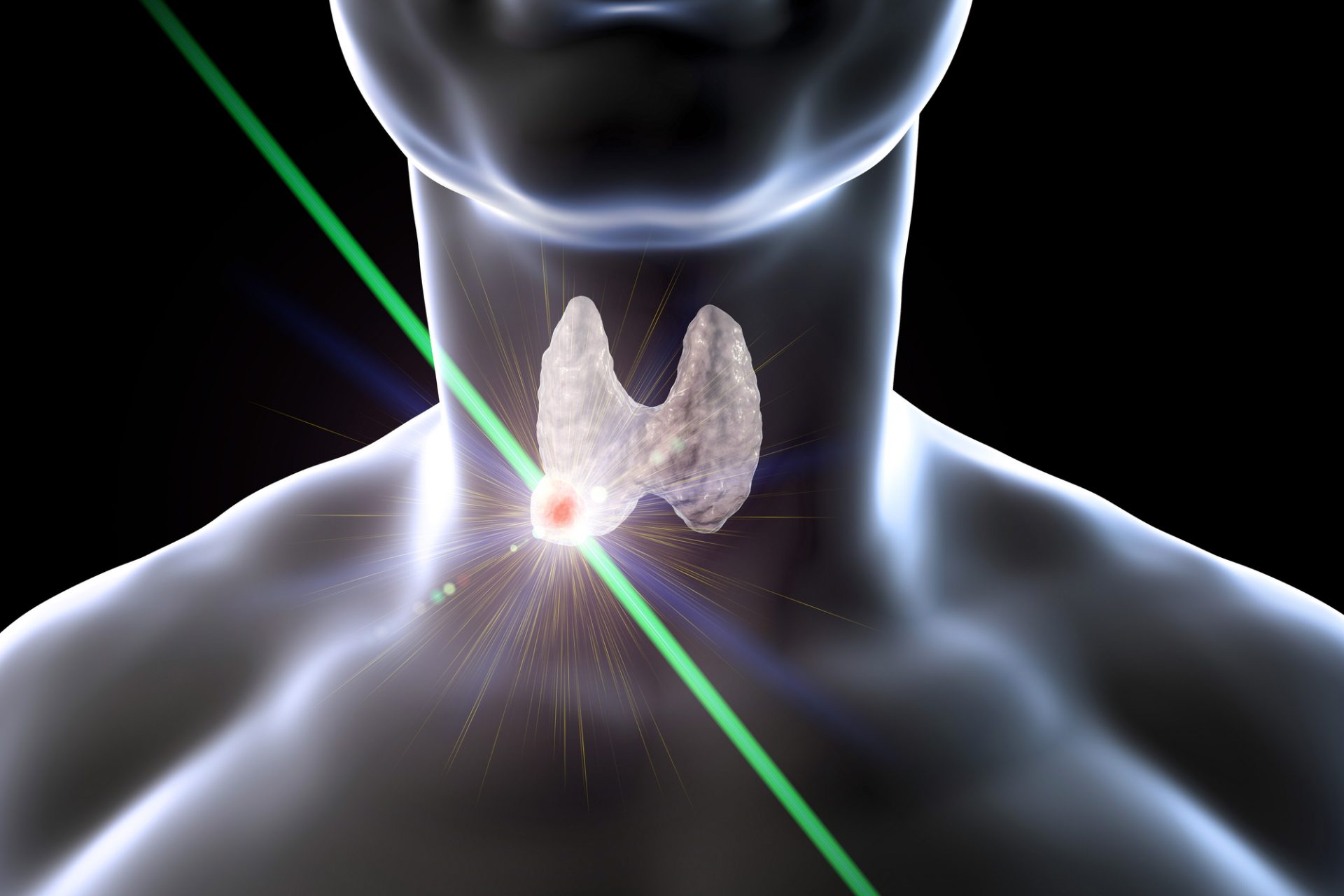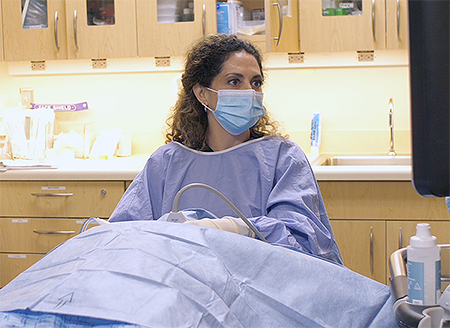
Radiofrequency Ablation is an Outpatient, Surgery-Free Procedure
Benign thyroid nodules are very common. Many may not know that thyroid nodules can be found in 2-10 percent of patients during a physical examination, meanwhile 20-70 percent of patients reveal nodules using ultrasound.
Historically, surgery has been the only modality available to treat symptomatic and enlarging thyroid nodules, or any size of cancer. Since Radiofrequency Ablation (RFA) for thyroid nodules was introduced in 2006, it has been reported to be both safe and effective for treating benign thyroid nodules and recurrent thyroid cancer1.
“With symptomatic benign thyroid nodules, not all patients will need surgery. Now there is another option”
Listen to Dr. Melanie Goldfarb discuss RFA for Thyroid
How does RFA work?
RFA is a non-invasive procedure that uses friction heat to destroy tumor tissue that is very close to the electrode. Over time, the body absorbs the ablated tissue, which reduces the size of the nodule. Conduction heat results in relatively slower damage to the tumor the further away it is from the ablated area and electrode tip2.
Reason to seek RFA Treatment:
- Compression symptoms (airway, hoarseness, swallowing)
- Cosmesis (appearance of a lump or bulge in the neck)
- Abnormal thyroid function (fatigue, sensitivity to cold, constipation, weight gain, etc.)
- 2 cm or enlarging nodule
Efficacy of RFA treatment:
- Greater than 50 percent reduction in nodule size (reduction is observable in the following weeks after treatment)3
- Significant improvement in symptoms or cosmesis (improved swallowing, reduces bulging neck)3
- Normalizes the thyroid function (blood pressure, hormones, heart rate, etc.)3
RFA is an outpatient procedure, and depending on the size and shape of the lesion, may last between 30 minutes to an hour. Saint John’s Health Center is one of the only facility offering this novel technique on the west coast.
Though RFA has been proven to be highly effective for thyroid nodules, it is not a definitive option like surgery. While surgery physically removes tissues, RFA reduces nodules over time, focusing mainly on larger nodules that cause local symptoms. “This is not a procedure for small nodules—everyone has those,” says Dr. Melanie Goldfarb, Director, Center for endocrine Tumors and Disorders, and Professor of Surgery at SJHC and SJCI.
“This procedure has been successfully performed in Europe and Asia for the past 10 years.”
How do you qualify for RFA treatment?
“To be considered for this procedure, there needs to be two biopsy’s that come back negative for thyroid cancer,” says Dr. Goldfarb. There is no evidence to support RFA as a cure for cancer currently. According to a recent press release, “Dr. Goldfarb is hopeful this technology will become more prevalent, she is a staunch proponent that it will become the procedure medical experts will utilize to treat thyroid nodules.”
‘It’s so exciting to bring RFA to Saint John’s Health Center, providing our community greater access to innovative treatment options and their benefits,’ said Dr. Goldfarb
Click here to request additional information about RFA for Thyroid or to make an appointment.
Sources
- Image-Guided Thyroid Ablation: Proposal for Standardization of Terminology and Reporting Criteria
- Radiofrequency Ablation of Thyroid Nodules: Basic Principles and Clinical Application
- Long-term Efficacy of a Single Session of RFA for Benign Thyroid Nodules: A longitudinal 5-year Observational Study
If you have questions regarding thyroid treatments and want to talk to an expert, please contact the endocrine center of excellence to speak with a clinician.



